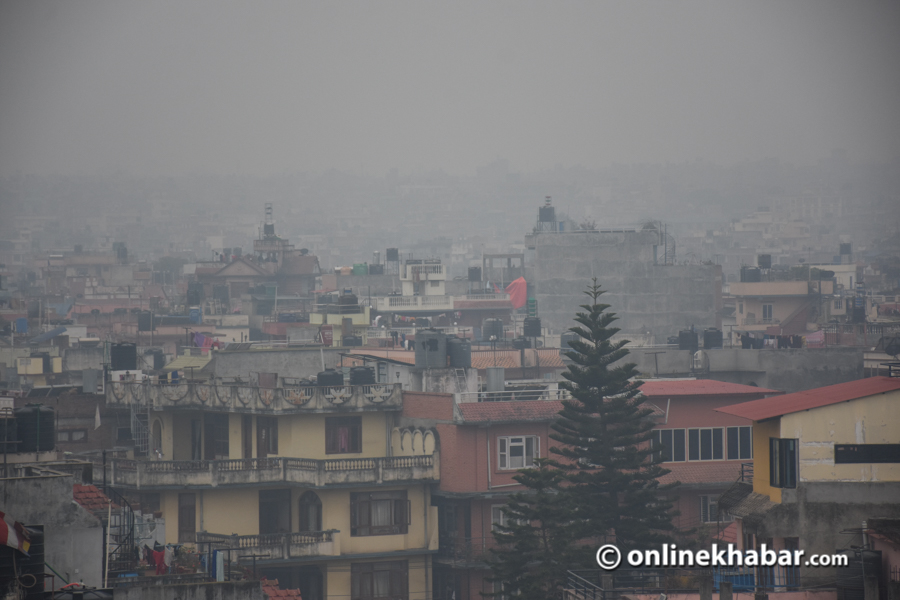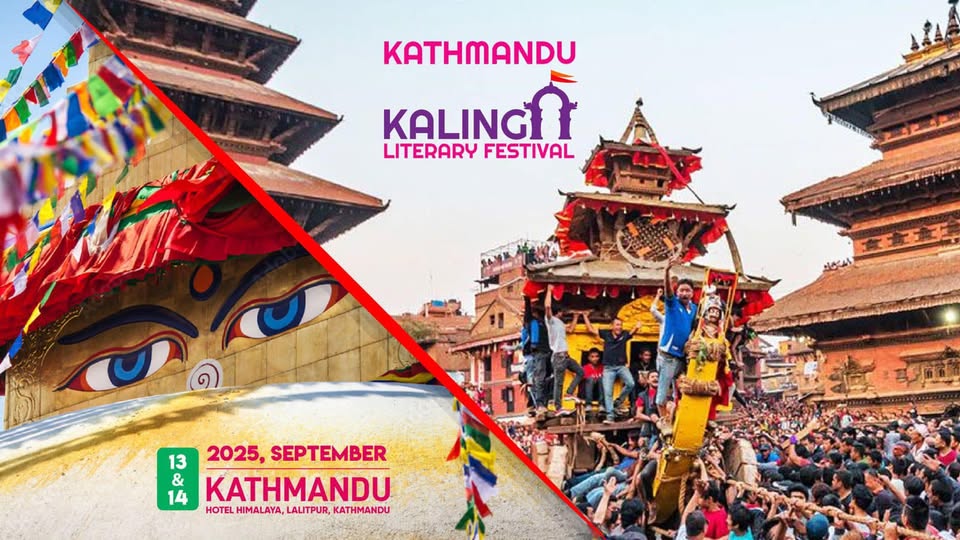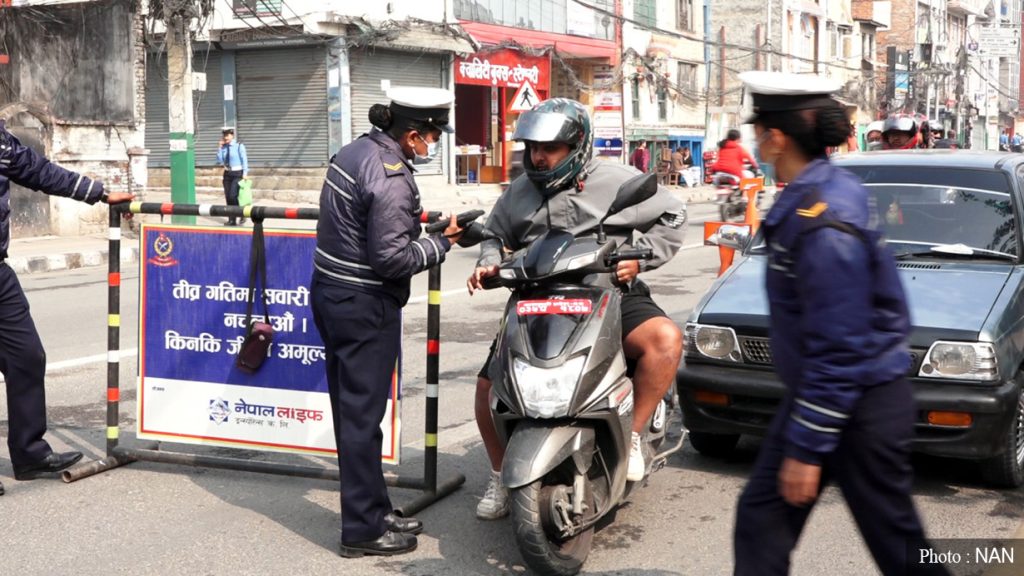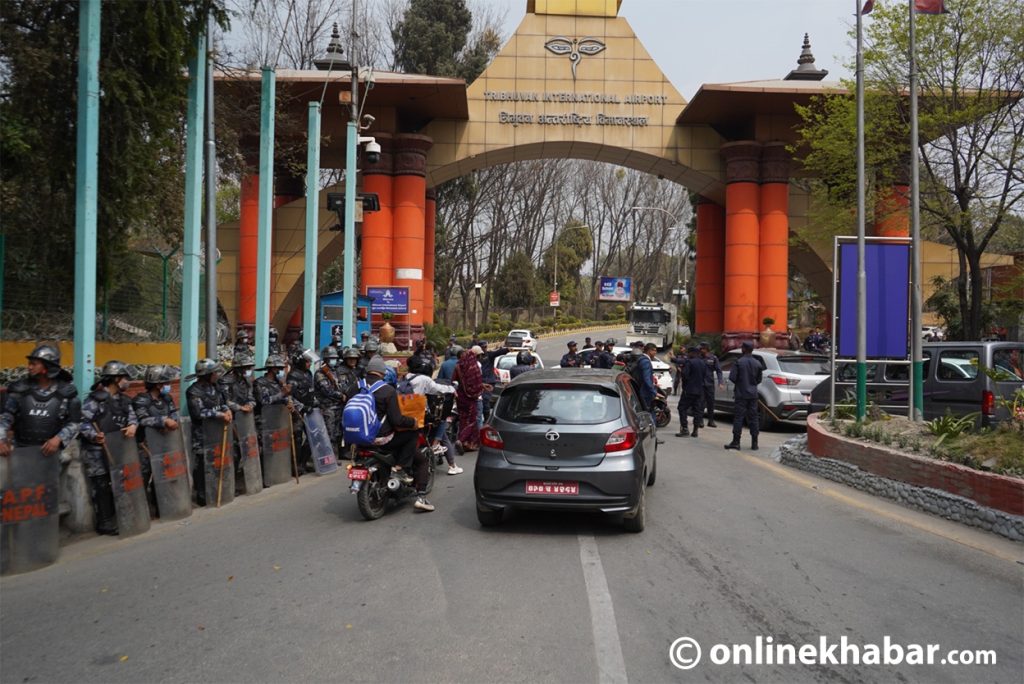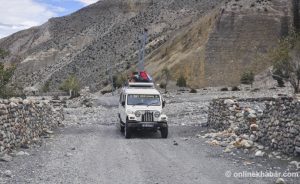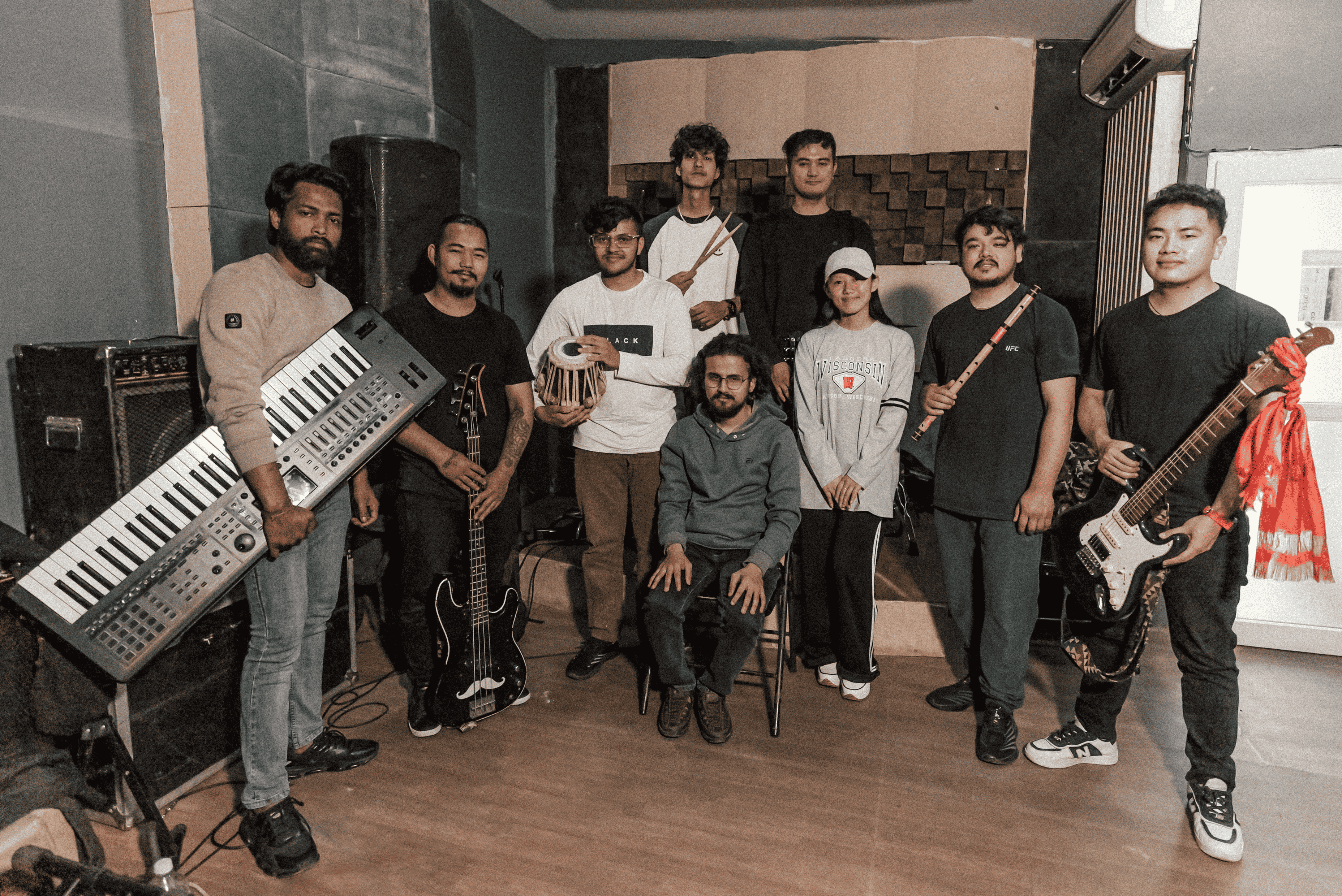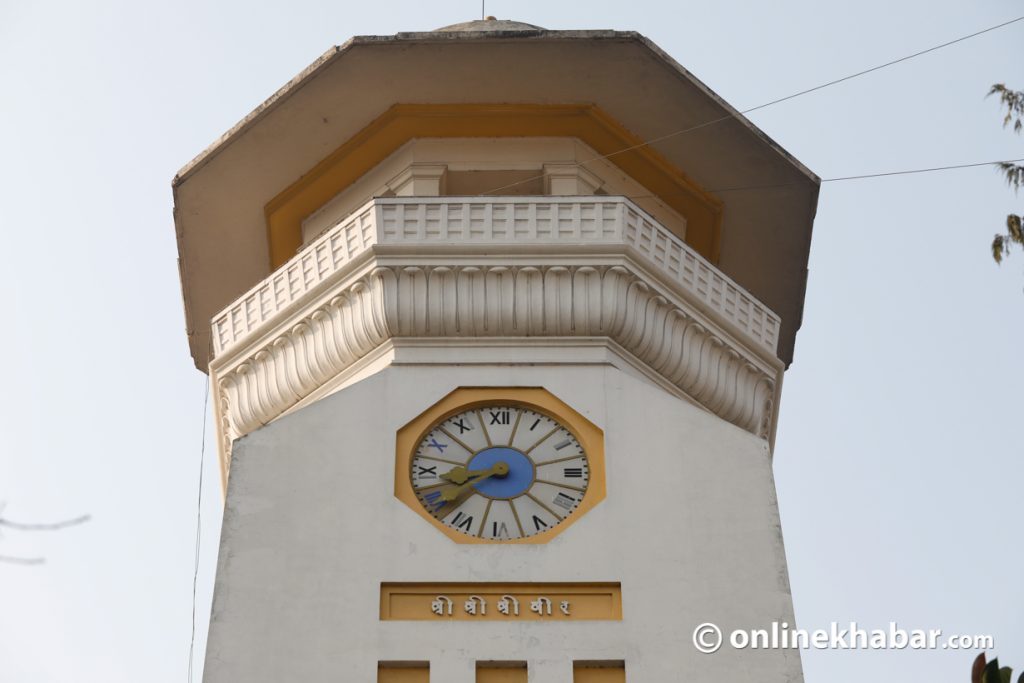
As schoolchildren what Kathmandu has to be proud of, and perhaps one of the first things they say in Ghantaghar.
The historic clock tower situated inside the compound of Tri-Chandra College was built by Rana Prime Minister Bir Shamsher. After its destruction in the 1934 earthquake, the clock tower was rebuilt in its current shape.
The United Nations Educational, Scientific and Cultural Organisation (UNESCO) has listed artificial structures over 100 years old as heritage, which justifies Ghantaghar to be a national property and a heritage.
By the way, have you ever wondered how it still gives you accurate time? Well, Ganesh Sapkota, is the only mechanic of Ghantaghar, who can answer you how.
However, Sapkota who is repairing the clock for 35 years, is afraid that after his retirement, due after two years, there would not be anyone who could have the skills to repair it when he finds the decision of the central project implementation unit under the Ministry of Education to make the clock run automatically is impossible.
The work and the challenges
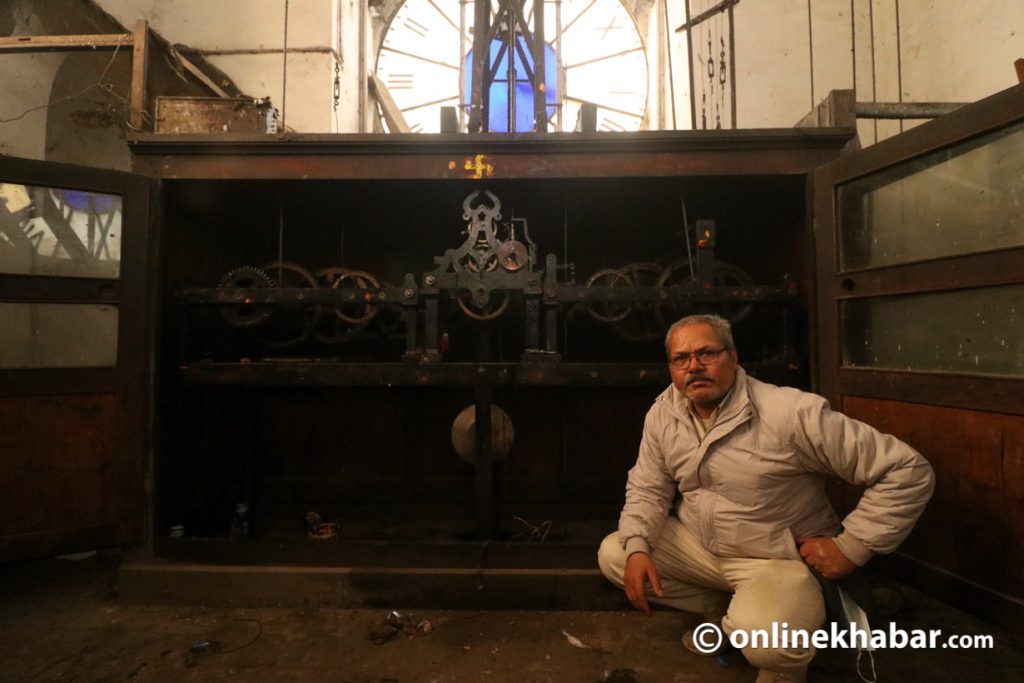
According to Sapkota, the clock at Ghantaghar needs manual work, twice a week, to keep it running. The clock has a driving weight, which is hung from a line coiled around a barrel or sprocket, which is raised by turning the winding square.
“Well, nothing is impossible in the world, but I don’t see the possibility of making this watch automatic,” he says, “It is wiser to continue this historical heritage as it is now rather than making it automatic.”
Until 1973, there used to be six employees who looked after it. No other employees were hired after their retirement.
He is concerned that after him, there is no one who understands the mechanism of Ghantaghar. “This is also our history. I have taken care of it for so many years. I have worked hard to save every part. I love it a lot, but I can’t do it alone,” says Sapkota, “I went to many places requesting to preserve it in the same way. However, I was left unheeded.”
He says that if the authorities can hire another employee now, even if he retires, the new person will have learned how to fix the clock.
“Even if I am called after two years for maintenance, I may not be able to climb the three floors of the clock tower and teach the new person about every part of it.”
The lone watchmaker
Sapkota who started working as a technician at Tri-Chandra College in 1980 was suddenly turned into a watchmaker during the SAARC summit held in Nepal in 1987.
The clock at Ghantaghar near the Narayanhiti palace stopped when preparations for the SAARC conference began. After the government could not find people to make it work, the campus’s technical department was asked to try.
“Being a technician of the laboratory, I had not even looked at the parts of the clock until that time”, he says, “After I got the responsibility to maintain it, I climbed into the clock house and observed how the parts of the machines worked.”
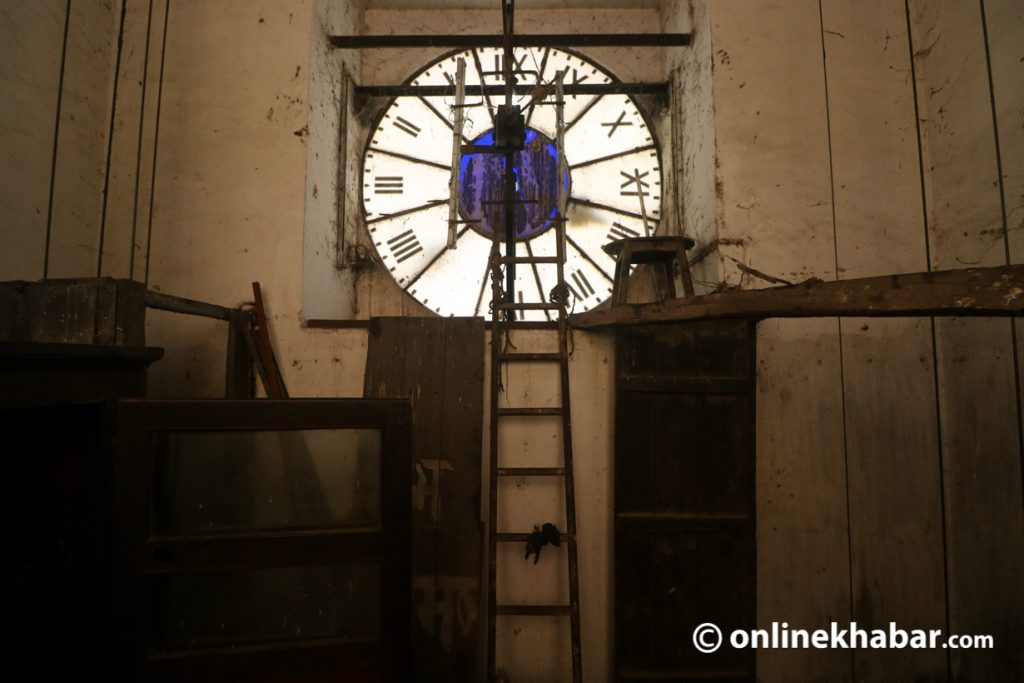
Sapkota remembers that he worked there for 13 days and 13 nights continuously finally making it operate again. That is how the clock tower came under his charge.
In the past 35 years, he stayed outside Kathmandu for only two nights. The only reason for that is the clock tower.
According to him, since it is more than 100 years old, any part of the clock can break at any time. It takes time to repair any broken parts, while the watch needs to be run immediately.
Just recently, the clock broke down and was closed for about a week. Sapkota says that it would take a lot of time if extra workers were hired to maintain the damaged parts.
In the 2015 earthquake, many parts of the clock were damaged, which could not be found in the market. He says that some of them were made to work by tying them together with wire.
Sapkota, the clock mechanic of the historic clock tower in Nepal’s capital, is as proud of his work as he is anxious. The fact that there is no one to run this watch after him, continues to shock him.
“I tried to teach my own son in 1997 whether he would become a mechanic after me, but he also showed no interest like others”, says Sapkota, “I want this clock to run continuously, but how? I myself don’t have the answer to this.”
This story was translated from the original Nepali version and edited for clarity and length.






